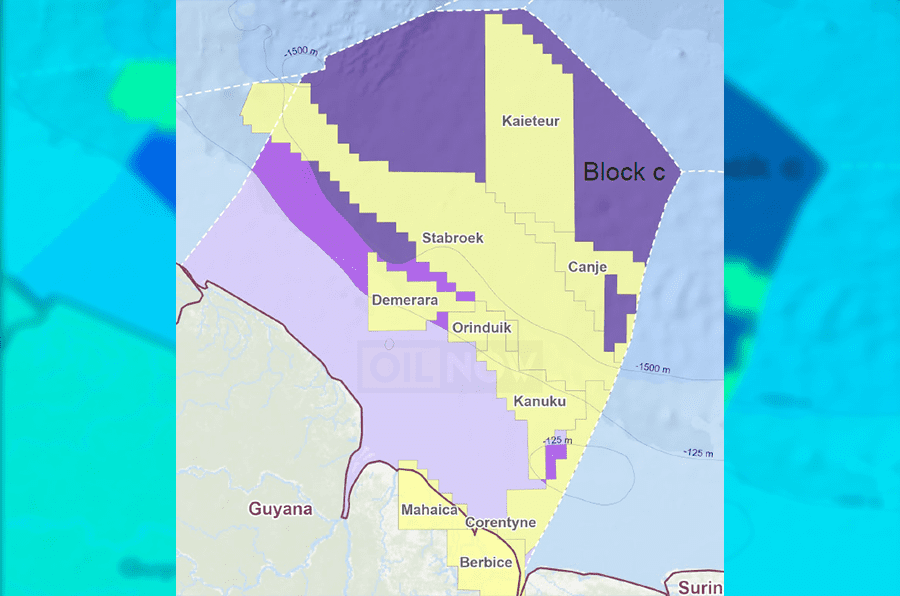Guyana, Suriname and the Caribbean region is currently seeing a slowdown in licensing activity for a number of reasons, including the effects of the COVID-19 pandemic on frontier exploration which has prompted international oil companies to focus primarily on areas with advantaged barrels.
According to analysis from Norway based Rystad Energy seen by OilNOW, in the most lucrative basin in the region, the Guyana-Suriname basin, much of the offshore acreage has already been licensed.
“Last year’s downturn prompted oil and gas companies to review their exploration strategies, resulting in many of them moving away from frontier exploration,” the energy research and business intelligence firm said.
Several companies now classify assets in the region as non-core – for instance Equinor, which is exiting its offshore blocks C1-C4 off Nicaragua.
Licensing rounds have been relatively scarce in the region, and some have failed to garner much interest, such as the ones held in Cuba and the Dominican Republic.
Suriname has seen seven offshore blocks awarded since 2016, accounting for about 70% of the acreage awarded in the region since that time while Barbados has awarded two offshore blocks in the same period.
The most recent licensing activity in Suriname was the 2020 shallow-water bid round. The round attracted 10 bids for only three of the blocks –5, 6 and 8 –which were awarded in mid-2021.
TotalEnergies and Qatar Petroleum were awarded blocks 6 and 8, which are adjacent to each other and lie immediately south of block 58, in which TotalEnergies and APA have discovered 1.7billion barrels of recoverable resources. Chevron was awarded Block 5. All three blocks lie in water depths between 30 and 65 meters and have a combined area of about 4,850 square kilometers.
“The lack of interest in the other five offered blocks could be due to their proximity to a string of unsuccessful near-shore exploration wells drilled by Staatsolie in 2019,” Rystad Energy pointed out.
After the 2015 Liza discovery across the border in Guyana, four exploration blocks (blocks 58 to 61) were awarded to various operators such as Apache (now APA), Tullow Oil, Equinor and Cairn Energy.
Guyana will be looking to sell oil blocks to highest bidders, country could retain some acreage
As exploration activity ramps up, Guyana is mulling a new bidding round that could see the light of day in 2022.
The country’s Vice President, Bharrat Jagdeo, said that in order to successfully auction off these blocks, the government first has to “aggressively enforce” the relinquishment provisions in the oil contracts. For context, relinquishment sees the contractor surrendering to the State all or part of the block they have been operating on, but only after the first, second and third renewal periods of its contract have expired.
Prime Guyana oil blocks up for auction in 2022 – VP Jagdeo
“The round marks a shift from the country’s earlier awards of production sharing contracts (PSCs) based on direct negotiations. Guyana is also looking to increase oil royalties for future PSCs,” Rystad Energy stated.
The Norway group said potential bidders are most likely to be interested in deeper waters, where most of the existing discoveries are located.
“In the northeastern part of Guyanese waters there is not much deepwater acreage up for grabs, with only two unallocated blocks: Block C, which lies east of the Kaieteur block and north of Stabroek, and a smaller block of about 1,325 square kilometers block that was relinquished by the Canje consortium,” Rystad Energy said.
The other unallocated offshore deepwater region lies in the northwest of Guyana’s offshore sector which is the subject of a territorial dispute with neighbouring Venezuela. Rystad Energy said this could be a roadblock for interested companies to explore this area.
Nevertheless, ExxonMobil’s unprecedented success in Guyana since 2015 will serve to bring considerable interest in the remaining blocks up for auction next year.



